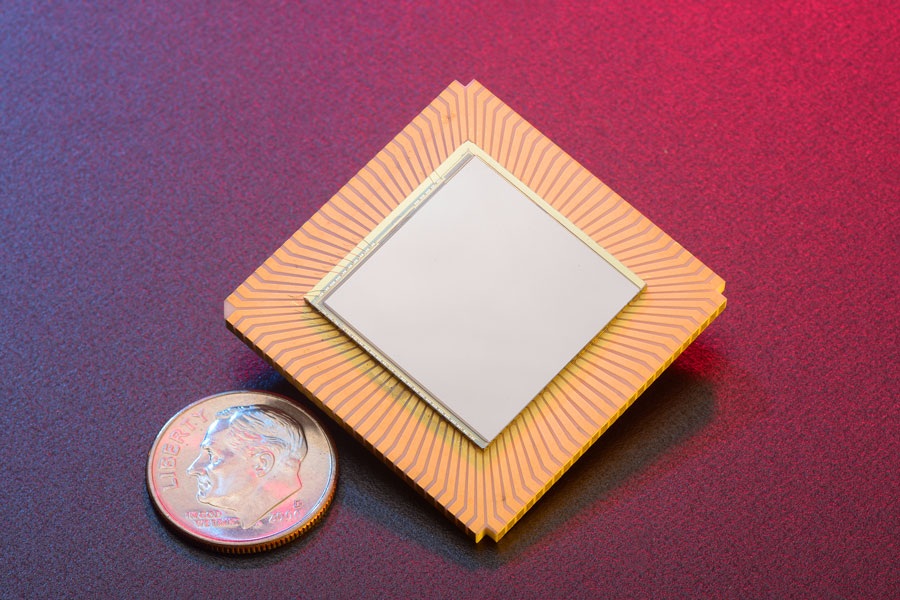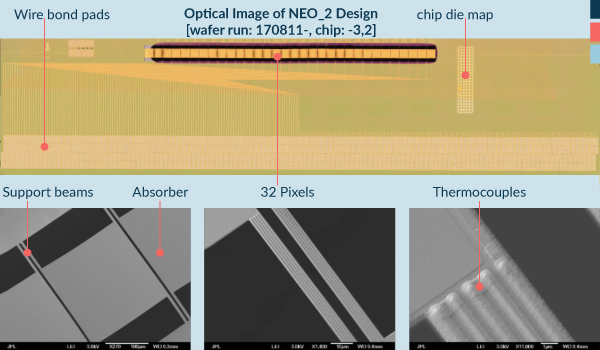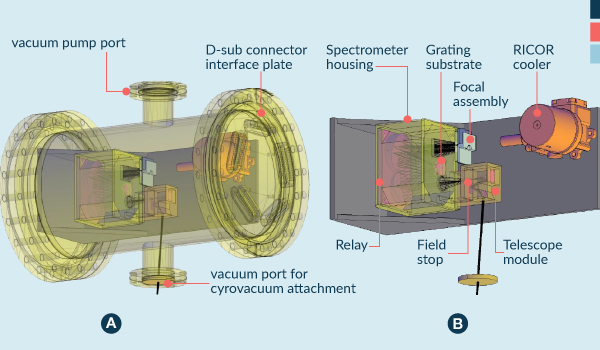Above:
This graphic depicts the Mars Climate Sounder instrument on NASA's Mars Reconnaissance Orbiter measuring the temperature of a cross section of the Martian atmosphere as the orbiter passes above the south polar region.
SWAMI
A Better Way to See the Infrared
IR spectrometers are used to remotely determine molecular structure of various samples. With solids this can identify the mineral composition. The current state-of-the-art for point spectrometers in the Short Wave Infrared (SWIR) region is represented by the Near Infrared Volatile Spectrometer Subsystem (NIRVSS) with heritage from the Lunar Crater Observation and Sensing Satellite (LCROSS), SuperCam from CNRS-Toulouse and the Broadband InfraRed Compact High Resolution Exploration Spectrometer (BIRCHES) development at Goddard. These point spectrometers use older technology and have both limited and undemonstrated performance.
The current state-of-the-art in Long Wave Infrared (LWIR) are the Tropospheric Emission Spectrometer (TES)/Mini-TES instruments from Arizona State University. Mini-TES covers only the LWIR (5 to 29.5 µm) and has a size of 23.5 x 16.3 x 15.5 cm, mass of 2.40 kg, and power consumption of 5.6 W. Using modern components including a custom JPL linear thermopile array (see below), the JPL Short Wave and Mid-infrared Investigation (SWAMI) (2-4 µm + 7-12 µm) delivers high return IR and thermal science in a miniaturized 2U form (see below).
We have designed and built a 32 pixel linear array of thermopiles that can be packaged in a compact form to fit into the small SWAMI payload volume.
+ Larger image
Left: The testbed that houses the ultra-compact, SWIR/MIR point spectrometer is designed and currently in assembly.
Right: A detail rendering shows that all key elements that comprise the spectrometer fit within a 2U form factor.
+ Larger image




